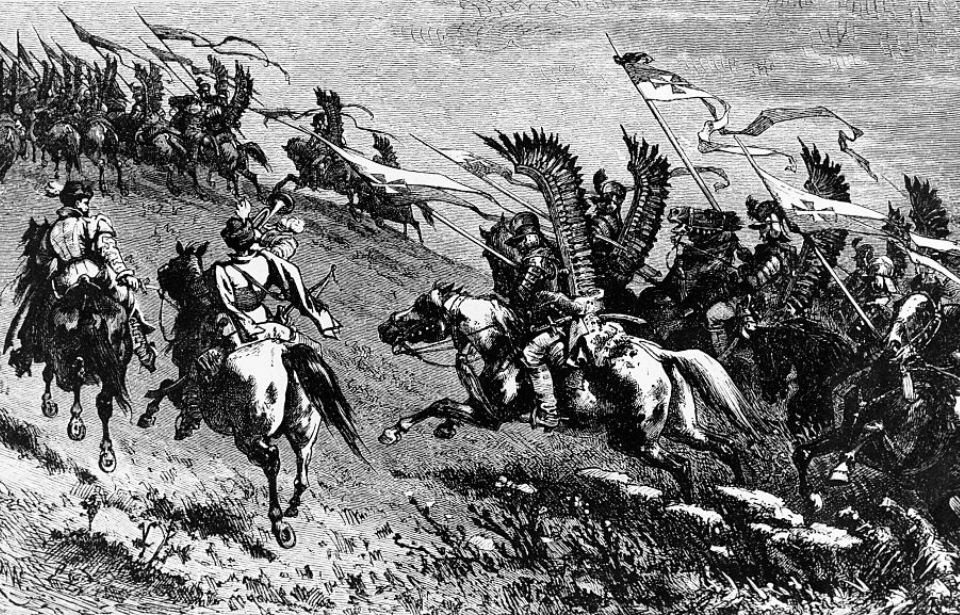
For two centuries, the elaborate winged uniforms and menacing battle tactics of the Polish hussars dominated the battlefield. Coming across the winged hussars must have felt like something out of a fantasy novel, as their wings were a tactic to demoralize the enemy. Even though history remembers the hussars less than the vikings or samurai, they definitely deserve a slot among the toughest warriors in history.
Who were the winged hussars?
The winged hussars originated in the 16th century as groups of exiled Balkan warriors who banded together to become mercenaries in Poland. In 1503, the Polish parliament assembled the first hussar formation under three banners, transforming them from light into heavy shock cavalry. They were considered the elite branch of the country’s military, as the majority were selected from wealthy Polish nobility.
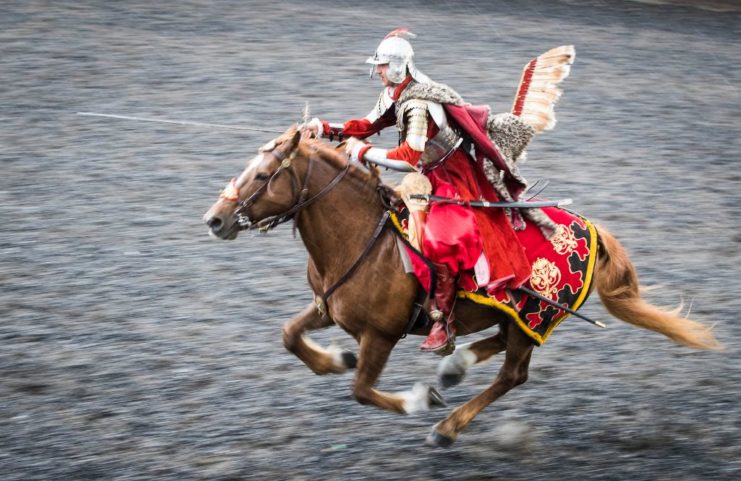
The hussars were initially equipped with long lances that were often decorated with banners, and as the 16th century progressed, they adopted heavier metal armor, and the lances were used as fierce weapons. With the proper tools, the hussars were practically unstoppable.
Between the Battle of Lubiszewo in 1577 and the 1683 Siege of Vienna, the hussars won over 16 major battles, signaling their “Golden Age.” Vienna, itself, was made famous by them, as they led the largest cavalry charge in history. At the Battle of Klushino in 1610, the Russian forces outnumbered the Polish fighters five to one, but were easily defeated, thanks to the winged hussars.
The winged hussars’ shocking war tactics
The primary battle tactic of the winged hussars was the charge. As the cavalrymen began to charge the enemy, their slow pace and staggered format slowly grew to a fast-paced run of hundreds of men forming an impenetrable wall, not only heading toward the enemy, but also going through them. Some reports even claim that one warrior’s lance could impale five Russians at once.
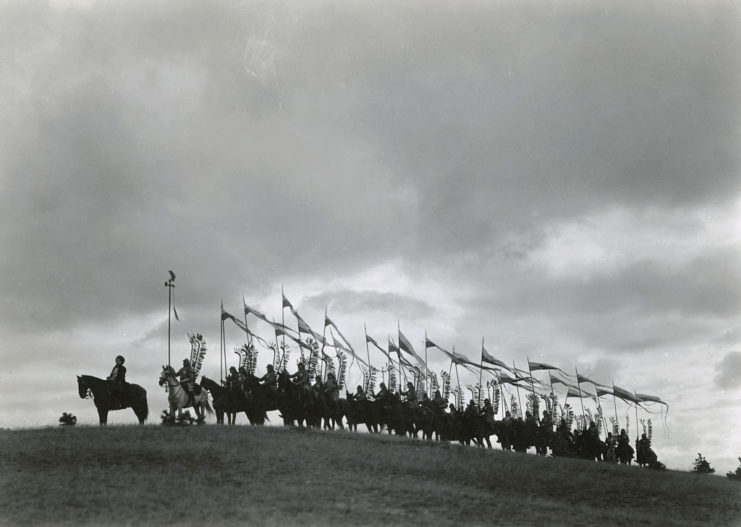
As a shock cavalry, winged hussars not only needed to be well-versed in battle tactics, but their appearance also played a large role in terrifying their enemies from across the battlefield. Their long and hollow lances, fitted with metal tips, could be seen from great distances, and while longer than traditional jousting ones were lighter and more durable. They also carried with them a sword, sabre and a set of pistols, along with backswords, koncerz, hatchets and maces.
Their elaborate armor, decorated in red and gold, signified their prowess and was a valuable asset. Made from lightweight steel, it was both protective and light enough to increase the speed of their horses as they charged into battle. The plated body armor consisted of bevors, cuirass, arm bracers and spaulders, which were paired with jackboots and a helmet.
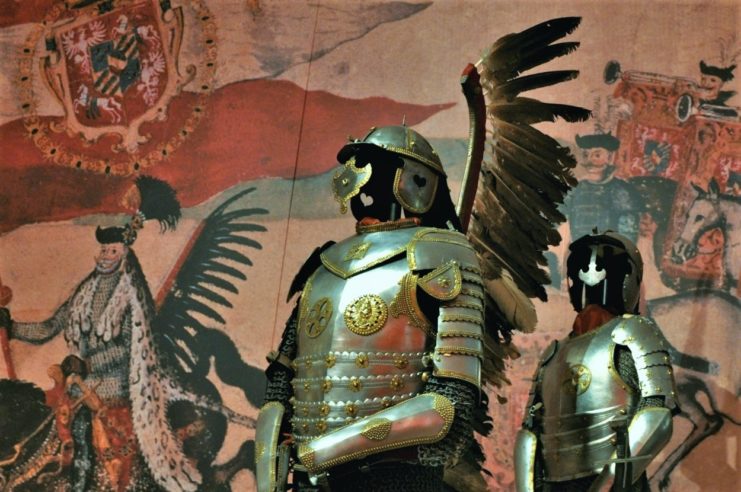
The incredible wings that seemingly sprouted from the hussars’ backs were the true masterpiece of their uniform. The wings were made from the feathers of birds of prey, which made a rustling sound that spooked enemy horses. They also protected warriors from attacks directed at their backs.
The Venetian messenger Hieronimo Lippomano wrote of his encounters with the hussars in 1575, “At war the Poles do anything possible to look as if there was more of them than there really is, to frighten the enemy they dress the horses in feathers, attach eagle wings to themselves and put leopard or bear skins on their shoulders.”
The Battle of Hodów
One of the winged hussars’ most infamous battles occurred during the 1683-99 Polish-Ottoman War. The Battle of Hodów in 1694 should have decimated the Polish force of 400 men (100 hussars and 300 Towarzysz pancerny), who were met by 40,000 Tatar soldiers. The Polish cavalry, led by the hussars, charged the Tatars with enough force to make them withdraw.
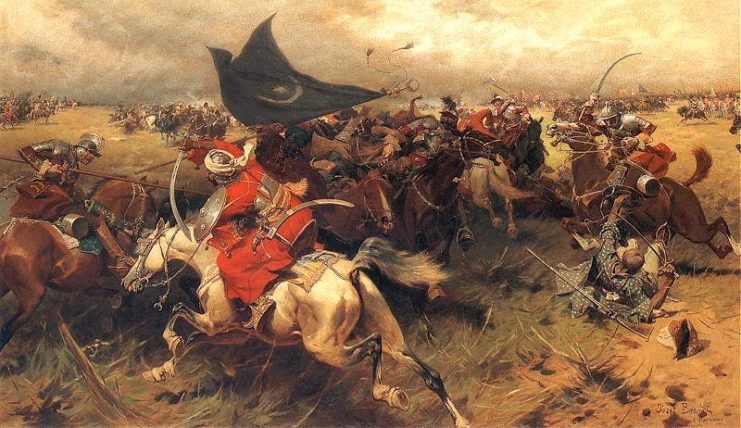
Over the course of six hours, the Polish forces fought off relentless attacks from the Tatars. Forced to retreat, they fortified themselves in a nearby village and used arrowheads as improvised ammo as they ran out of bullets.
Eventually, the Tatars sent a Polish translator to beg them to surrender. To this, the Polish commander declared, “Come and get us if you can.” Their confidence, despite such overwhelming odds, worked in their favor – the Tatars abandoned their raid and retreated.
From outstanding to obsolete
Of all the battles they fought, the 1702 Battle of Kliszów decimated the winged hussars, signaling their downfall. New innovations aimed at stopping cavalry charges drastically impacted their effectiveness, particularly the introduction of firearms. The hussars heavily relied on melee weapons like lances, axes and swords, while their enemies began to equip their soldiers with guns.
The hussars were so attached to their extravagant uniforms and outdated weapons that they struggled to adapt to the rapidly changing environment, despite being equipped with their own firearms.
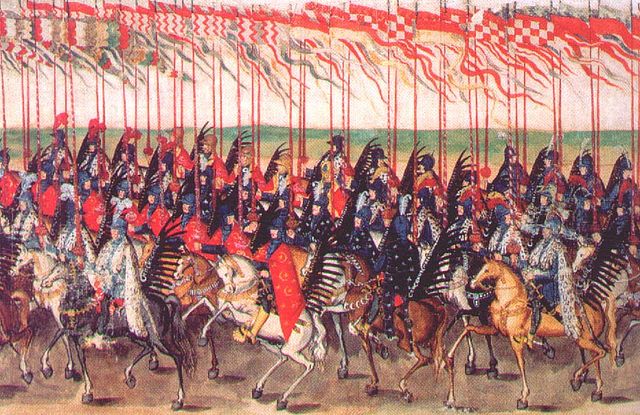
By 1776, the Polish winged hussars’ prowess had all but faded away and the branch was demoted to a ceremonial role. Today, they are depicted on the commemorative 200 złotych coin, and are honored in the Polish military by the badge of the 1st Armoured Division, which features the wings of the hussars.
The winged hussars remain a unique part of Poland’s military history, and while the antiquated warriors seemingly disappeared from the battlefield in 1776, they continue to represent the intense nature of Poland’s Army and the country’s infamous history.



